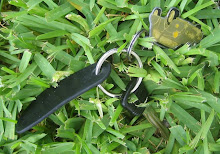Kraków, in English also spelled Krakow or Cracow, is one of the largest and oldest cities in Poland, with a population of 756,336 in 2007 (Poland has a population of around 38 million). Situated on the Vistula river in the Lesser Poland region, the city dates back to the 7th century.
We began one morning with a bike tour of the city. In the background is the Main Market Square, with the large yellow building being the Cloth Hall.

St. Mary's Basilica, is a Brick Gothic church built in the 14th century, adjacent to the Main Market Square in Kraków, Poland. Standing 80m (262ft) tall, it is particularly famous for its wooden altarpiece carved by Veit Stoss.
On every hour, a trumpet signal — called the heynal (hejnał) — is played from the top of the taller of St. Mary's two towers. The plaintive tune breaks off in mid-stream, to commemorate the famous 13th century trumpeter, who was shot in the throat while sounding the alarm before the Mongol attack on the city.
Our guide told us a story about why the two towers are different: "Two brothers (Peter and Paul) designed and built the towers and they were extremely competitive as to who could build the tallest and most beautiful construction. Each tried to outdo his sibling and in the end, in a fit of jealous rage one brother murdered the other."

The Collegium Maius, or Great College, in Kraków, Poland, is the Jagiellonian University's oldest building, dating back to the 15th century.

An old Soviet era building.

Memorial to St. Stanislaw in front of the St. Stanislaw Church.
A Romanesque church originally stood on this elevated site, located on the Vistula embankment south of Wawel Hill. It was here in 1079 that Bishop Stanislaw (or Stanislaus; 1072–1079) was beheaded and dismembered by order of King Bolesław.
The cause of the conflict between bishop and king is complex and not entirely known, but it reached a boiling point when Stanislaw excommunicated the king. The king then accused the bishop of treason and had him brutally killed in this church. The violent story is remarkably similar to that of King Henry II and Bishop Thomas à Becket in Canterbury, England.
Legend has it that the saint's body was miraculously reassembled, which made an apt symbol of the restoration of Poland's unity after its years of fragmentation.

Going through the Jewish quarter now.

Juliusz Slowacki Theater, which also doubles as an opera house.

Cool archway over the street.

Wawel Cathedral – the Cathedral Basilica of Sts. Stanisław and Vaclav – is Poland's national sanctuary, located on Wawel Hill in Kraków. It has a 1,000-year history and was the traditional coronation site of Polish monarchs. It is the cathedral of the archdiocese of Kraków.

Smok Wawelski, also known as The Dragon of Wawel Hill or simply The Wawel Dragon, is a famous dragon in Polish folklore. He laired in a cave under the Wawel Hill on the banks of the Vistula river, although some legends place him in the Wawel mountains. In some stories the dragon lived before the founding of the city, when the area was inhabited by farmers.
The Wawel Cathedral features a statue of the Wawel Dragon and a plaque commemorating his defeat by Krakus, a Polish prince who, according to the plaque, founded the city and his palace on the slain dragon's lair. The dragon's cave under the castle is now a popular tourist stop.
A popular version of the Wawel Dragon tale takes place in Kraków during the reign of king Krakus, the city's legendary founder. Each day the evil dragon would beat a path of destruction across the countryside, killing people, pillaging their homes and devouring their livestock. In many versions of this story, the dragon especially enjoyed eating young girls, and could only be appeased if the townfolk would leave a young girl in front of his cave once a month. The King certainly wanted to put a stop to that awful situation, but his bravest knights fell to the dragon's fiery breath. In the versions involving the sacrifice of young girls, every girl in the city was eventually sacrificed except one, the King's daughter Wanda. In desperation, the King promised his beautiful daughter's hand in marriage to anybody who could defeat the dragon. Great warriors from near and far fought for the prize and failed. One day, a poor cobbler's apprentice named Dratewka accepted the challenge. He stuffed a lamb with sulphur and set it outside the dragon's cave. The dragon ate it and soon became incredibly thirsty. No amount of water could quell his stomach ache, and after swelling up from drinking half of the Vistula river, he exploded. The apprentice married the King's daughter as promised and they lived happily ever after.

St Peter and St. Paul Church stands very close to the Wawel Castle. You'll notice it for sure on your way to the Old Town from the castle. Built for Jesuits in change of 16th and 17th centuries in the Baroque style. At the entrance figures of the Twelve Apostles. Inside the huge Baroque altar, rich scalptured thrones, many paintings, a few sculptures and graves. Most of the church's equipment date to the beginning of 18th century. The crypt of the famous preacher Piotr Skarga is located in the underground of the church.

Looks like Cinderella's carriage.

Beautiful evening sky over the Vistula River.

Sunset over the Vistula River.

An evening pint of Polish beer.


No comments:
Post a Comment